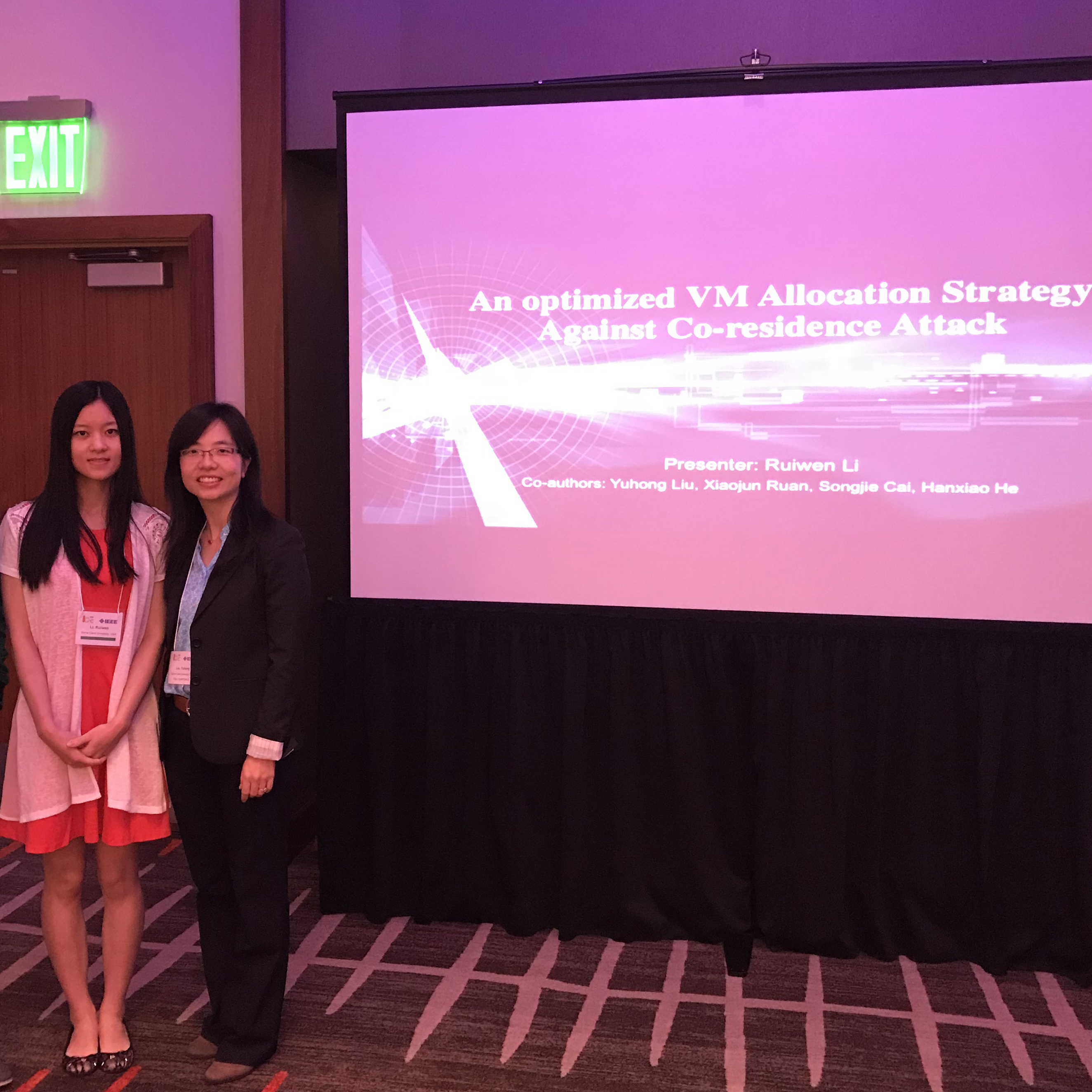
The Magic of Ants
Ants have spoiled countless picnics and struck horror in the hearts of many a homeowner opening the pantry door. But, oddly enough, they just might hold the key to cloud security.
That is what Yuhong Liu, assistant professor of computer engineering, and computer science and engineering senior Ruiwen (Louise) Li are working to prove. Collaborating with colleagues from California State University, East Bay, the pair is testing an algorithm based on the humble ant’s expertise at finding the most efficient path to the safety of the nest—in this case, security for sites co-located on shared servers.
“There is a security problem in cloud computing with co-residence leaving users vulnerable to attack. Each user places virtual machines (VM) on the server in order to access the resources of the host, but an attacker can steal information from another user whose VM is located on the same server. We’re trying to prevent this,” said Li. “If the attacker cannot locate a VM to target, they cannot perform the attack. A VM allocation strategy can prevent malicious users from co-locating their VM on the same server as the targeted VM.”
To find a low-cost VM allocation strategy that factors in security, workload balance, and power consumption, they created an algorithm inspired by nature. “When a colony of ants tries to find the shortest path from food to nest, maybe ten ants take off and choose ten random trials, leaving their pheromones along the different trails. The most efficient route is identified as an ant returns, leaving its pheromones along the way and signaling success while other trails grow cold as their ants’ pheromones evaporate. Say twenty more ants pass and find the trail with the most pheromones; they know it is the shortest path and they leave more pheromones. With more iterations, the shortest path is reinforced,” Li explained.
Putting this strategy to work, the team’s algorithm mimics the pheromone method of finding the optimal result. They made two analogies: one to test different ways to assign a VM on a server to find the safest method; another to test cost functions. “The lowest cost is the most organized. As we perform more iterations, the most efficient will stand out,” said Li.
Li presented the team’s findings at a conference last spring and continued working with Dr. Liu through the summer, including more real-time factors to expand the experiment and integrating their program with a Cloud SIM app to simulate cloud service and modeling to make it more realistic.
“It’s like magic once you make the analysis and everything works out,” she said. “Using patterns from nature to solve problems in cloud computing that would otherwise be too difficult to decipher is just amazing!”
Louise Li (pictured with Yuhong Liu) presented her work last spring at a conference in Maui, Hawaii.